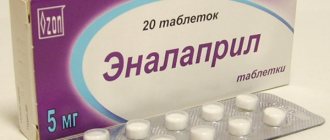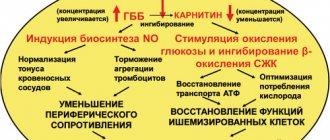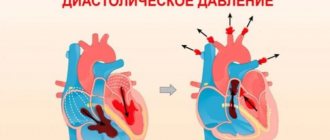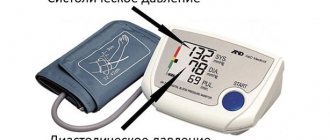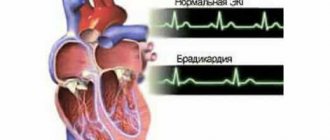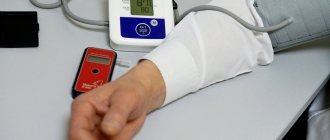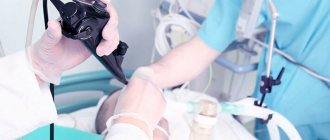Today, pharmaceutical companies have developed many antihypertensive drugs that help significantly improve the quality and life expectancy of hypertensive patients. Popular medications from the group of ACE inhibitors are drugs based on the active substance enalapril. Medicines are produced under various trade names, and have expensive and more affordable analogues. Among them, Enap and Enalapril have gained the greatest popularity among patients. Both drugs have similar pharmacological properties and practically do not differ in chemical composition. However, what is better than Enap or Enalapril in the fight against the manifestations of arterial hypertension?
Comparison of the effectiveness of Enap and Enalapril
The effectiveness of Enap is quite similar to Enalapril - this means that the ability of the drug substance to provide the maximum possible effect is similar.
For example, if the therapeutic effect of Enap is more pronounced, then using Enalapril even in large doses will not achieve this effect.
Also, the speed of therapy - an indicator of the speed of therapeutic action - is approximately the same for Enap and Enalapril. And bioavailability, that is, the amount of a drug reaching its site of action in the body, is similar. The higher the bioavailability, the less it will be lost during absorption and use by the body.
Reviews from doctors
Ekaterina Gromova, general practitioner, Nizhny Novgorod: “I prescribe Enap for hypertension and ischemia as a prevention of heart attack. I recommend enalapril for unstable angina in complex treatment. Patients do not always follow doctor's instructions. Arriving at the pharmacy, they buy the cheaper drug Enalapril. There are almost no complaints about side effects. Both drugs are well tolerated if the dosage is not violated.”
We recommend reading: Compatibility of Dexamethasone and Suprastin
Svetlana Kartashova, general practitioner, Rostov-on-Don: “I consider Enap a more effective remedy than Enalapril, but many patients prefer inexpensive drugs. I prescribe medication for grade 1-2 hypertension. If the disease is severe, I prescribe several medications. One of the side effects I can mention is a dry cough. In this case, I reduce the dosage or select another drug.”
Comparison of the safety of Enap and Enalapril
The safety of a drug includes many factors.
At the same time, in Enap it is quite similar to Enalapril. It is important where the drug is metabolized: drugs are excreted from the body either unchanged or in the form of products of their biochemical transformations. Metabolism occurs spontaneously, but most often involves major organs such as the liver, kidneys, lungs, skin, brain and others. When assessing the metabolism of Enap, as well as Enalapril, we look at which organ is the metabolizing organ and how critical the effect on it is.
The risk-benefit ratio is when the prescription of a drug is undesirable, but justified under certain conditions and circumstances, with the obligatory observance of caution in use. At the same time, Enap does not have any risks when used, just like Enalapril.
Also, when calculating safety, it is taken into account whether only allergic reactions occur or possible dysfunction of the main organs. In other matters, as well as the reversibility of the consequences of using Enap and Enalapril.
“Blood pressure pill”: how it works
There is probably no other group of drugs that contains so many drugs. In addition, most of the drugs have a good dozen analogues, which wreaks havoc among antihypertensive drugs, beyond the control of the common mind. But the mind of a good cardiologist and professional pharmacist can comprehend not such a medicinal mess.
"A lot" does not mean "good"
The variety of antihypertensive drugs is largely due to the fact that today, along with modern ones, the drugs that were used to treat our grandmothers continue to be used. Fortunately, they are used quite rarely, but, nevertheless, they bring confusion to the treatment of hypertension. In addition, it should be borne in mind that in Russian pharmacies you can still easily buy any antihypertensive drug without a doctor’s prescription. This means that self-medication of hypertension, which cannot be called anything other than “self-torture,” continues to flourish and bear bitter fruits.
But is there really a big difference in how and with what to reduce the pressure: the main thing is that the tonometer shows the norm or numbers close to it? Of course there is, and here's why.
The fact is that many antihypertensive drugs lead to a sharp decrease in blood pressure. This does not have the best effect on the patient’s well-being, but there are much more serious consequences. If you constantly take these medications, the elasticity of the vascular wall, which regularly tenses and relaxes, decreases. As a result, heart and vascular diseases develop (or rapidly progress) - the most dangerous complications of hypertension.
Drugs that have a sharp vasodilating effect include adelfan and clonidine, beloved by many generations of hypertensive patients. Cheap bendazole and its combination with papaverine, metamizole and phenobarbital (andipal) have a less powerful effect on blood vessels. These drugs reduce cardiac output and, with long-term use, worsen ECG readings.
But herbal antihypertensive drugs, for example raunatin, should not be taken seriously at all: a more effective and safe alternative has long been found for drugs whose age has already exceeded the sixth decade.
Six groups
I have not listed all the antihypertensive drugs that continue to be produced and used, despite serious disadvantages and side effects. There are so many of them that I am afraid to completely confuse the reader. It is much easier to name those drugs that are recognized throughout the world as the drugs of choice for the treatment of hypertension. They belong to six pharmacological groups:
- Diuretics or diuretics (hydrochlorothiazide, indapamide).
- Beta blockers (atenolol, betaxolol, metoprolol, bisoprolol, nebivolol, etc.).
- Calcium channel blockers (verapamil, amlodipine, nifedipine, felodipine, etc.).
- ACE inhibitors (captopril, enalapril, lisinopril, ramipril, fosinopril, etc.).
- Angiotensin II receptor blockers (losartan, valsartan, candesartan, irbesartan, telmisartan, etc.).
- Alpha adrenergic blockers (doxazosin, urapidil, etc.).
The mechanism of action of each of these groups is different and quite complex:
- Diuretics
(diuretics) increase the excretion of salts and water from the body. As a result, the sodium content in the vessel wall is reduced, which prevents vasoconstriction and increased blood pressure. - Beta blockers
work by blocking so-called β1-adrenergic receptors located in the heart. This leads to a decrease in the frequency and strength of heart contractions and a decrease in blood pressure. - The action of calcium channel blockers
is based on the ability to block the passage of calcium ions into the cell, which reduces vascular tone, expands their lumen and improves blood circulation in them. - ACE inhibitors
block the angiotensin-converting enzyme, which converts angiotensin I to angiotensin II, which has a powerful vasoconstrictor effect. - Angiotensin II receptor blockers
act on the same mechanism as ACE inhibitors, but at a later stage. - Alpha blockers
lower blood pressure, reducing vasospasm.
By the way, there is practically no difference in efficiency between them. Among a number of drugs, nifedipine and captopril stand out, which can be taken as first aid to quickly reduce blood pressure. In addition, diuretics, calcium channel blockers and ACE inhibitors definitely reduce the risk of developing cardiovascular accidents, the likelihood of which increases significantly with hypertension.
Comparison of addiction between Enap and Enalapril
Like safety, addiction also involves many factors that must be considered when evaluating a drug.
So, the totality of the values of such parameters as “o syndrome” in Enap is quite similar to the similar values in Enalapril. Withdrawal syndrome is a pathological condition that occurs after the cessation of intake of addictive or dependent substances into the body. And resistance is understood as initial immunity to a drug; in this it differs from addiction, when immunity to a drug develops over a certain period of time. The presence of resistance can only be stated if an attempt has been made to increase the dose of the drug to the maximum possible. At the same time, Enap has quite a small amount of “syndrome”, however, the same as Enalapril.
Video on the topic
What's best to drink for blood pressure? Review of the most effective medications in the video:
To summarize, we can confidently say that Enalapril and Enap are prominent representatives of effective antihypertensive drugs that gently lower blood pressure, normalize cardiac activity and prevent the development of heart failure.
It is important to remember that these drugs should not be taken without consulting a specialist who will prescribe the patient adequate dosages of the medication, taking into account the degree of complexity of his illness, the presence of contraindications to use and complications from other organs.
Comparison of side effects of Enap and Enalapril
Side effects or adverse events are any adverse medical event that occurs in a subject after administration of a drug.
Enap's side effects are almost the same as Enalapril's. They both have few side effects. This implies that the frequency of their occurrence is low, that is, the indicator of how many cases of an undesirable effect of treatment are possible and registered is low. The undesirable effect on the body, the strength of influence and the toxic effect of Enap are similar to Enalapril: how quickly the body recovers after taking it and whether it recovers at all.
Contraindications and side effects
Before prescribing drugs from the group of ACE inhibitors, contraindications should be carefully studied to eliminate the risk of developing side effects from therapy in each specific case.
The drugs should not be used in patients diagnosed with:
- individual intolerance to medication components;
- tendency to develop angioedema and other forms of immediate allergic reactions;
- porphyria;
- bilateral renal artery stenosis;
- period of pregnancy and breastfeeding.
Often, ACE inhibitors cause adverse reactions, including migraine pain, a persistent decrease in blood pressure, general weakness and nausea, dizziness, and anxiety.
You should not take Enap or Enalapril without a doctor's prescription, since such actions can aggravate the condition of a sick person and provoke the development of acute variants of coronary heart disease or rhythm disturbances.
Comparison of ease of use of Enap and Enalapril
This includes dose selection taking into account various conditions and frequency of doses. At the same time, it is important not to forget about the release form of the drug; it is also important to take it into account when making an assessment.
The ease of use of Enap is approximately the same as Enalapril. However, they are not convenient enough to use.
The drug ratings were compiled by experienced pharmacists who studied international research. The report is generated automatically.
Last update date: 2020-12-04 13:42:31
Patient reviews
Valery Kravtsov, 53 years old, Krasnodar: “As soon as I turned 50 years old, many ailments appeared, incl. The pressure began to rise. I had to undergo an examination, after which the doctor diagnosed arterial hypertension and prescribed Enap. The medicine is not cheap, but I bought it and started taking it. The condition improved after about a month.
I decided to look for analogues and came across Enalapril, which is much cheaper. I bought it and started taking it in the same dosage that the doctor prescribed. There were no side effects, both drugs were equally effective, so I settled on the cheaper one.”
Irina Romanova, 47 years old, Sochi: “Enalapril was prescribed by a therapist after he diagnosed stage 2 hypertension. Due to problems with the thyroid gland, the doctor recommended the minimum dosage. There were no side effects, so the dosage was gradually increased to 10 mg. I began to feel much better, but after a few months the drug stopped working.
I went to the doctor and told about my problems. He prescribed another drug - Enap, warning that this medicine was more expensive. I started taking it. This medicine is gentler and more effective. It’s helping for now, but I don’t know what will happen in a year.”
Nina Kruglitskaya, 54 years old, Khabarovsk: “I’ve been taking Enalapril for about a year. The pressure remains normal. When I started taking the medicine, I suffered from a dry cough. I thought it was bronchitis and went to the doctor. But the doctor said that this is a side effect that often happens when taking this medication. He suggested replacing it with something else, but the cough went away, so she continued taking Enalapril. I feel good so far.”
We recommend reading: Is it possible to take Vitamins A and E together?
